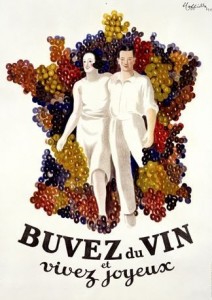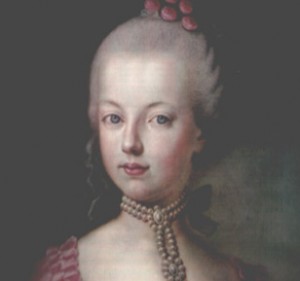Alcohol gets a lot of bad press. Last year, Aaron Motsoaledi, SA Minister of Health, was quoted as saying “what is being done to smoking is going to be done to alcohol.” Yet is the demon drink really as bad as a cancer stick? Is Riesling on a par with Rothmans? Cabernet with Chesterfield? To paraphrase William Boot when wishing to contradict his boss Lord Copper in Evelyn Waugh’s magisterial Abyssinian novel Scoop, “up to a point, Minister Motsoaledi, up to a point.”
The news that leading Chilean wine brand Concha y Toro would open a Cape Town office in April was broken by Su Birch, CEO of WOSA (the SA wine exporters’ mouthpiece) on Twitter in February. So why should SA consumers switch from Dombeya to Don Melchor or replace Cape Point Vineyards with Casillero del Diablo?
In a word, for more flavonoids. Evelyn’s son Auberon, in one of the his last wine columns in The Spectator before he adjourned to the Great Cellar in the Sky, reported that scientists at Glasgow University concluded (after spending R50 million of research funds) that Chilean reds are the healthiest things you can drink. “Much better than anything else at fighting heart disease, cancer and conditions associated with ageing.” Although Bron did spoil it a tad by continuing “I have heard the same claim made for lentil seeds, but chose to ignore it.”
It appears that Chilean reds are bursting with flavonoids, an anti-oxidant that affords a magic bullet protection against heart disease and certain kinds of cancer. Thomas Stuttaford, author of To Your Good Health!: the wise drinker’s guide explains more.
In particular, he answers the age-old chestnut “why do you get drunk from Champagne so quickly?” Seems that Champagne, a comparatively strong but relatively bland drink, fools the stomach into thinking it is a close cousin to water. The pylorus, the valve between the stomach and the small intestine, opens and the alcohol from Champagne is rapidly absorbed by the small intestine, far quicker than it would be through the stomach wall. Come to think of it, could this be why Kiwi Sauvignon masters Cloudy Bay call their fizzy wine Pelorus?
The same holds true with alcoholic drinks taken with a mixer. Johnnie Black neat will close any pylorus tighter than a whale’s nostrils at fifty fathoms, while Smirnoff with fruit juice and most cocktails will slip through faster than a celebrity in the queue to get into ZAR.
While some of the good doctor’s researches are a little off the point, they are nonetheless worth quoting for as Marcel Proust noted “one must never miss an opportunity of quoting things by others which are more interesting than those one thinks up oneself.” Stutty is clearly a GP from the old school, educated in the proper classical tradition where wine is the responsibility of Bacchus, son of Zeus, who was taught the skills of the trade by satyrs, nymphs and the centaurs of Pan, God of woods and pastures.
Priapus, God of Agriculture (above), depicted in statutes with an erect penis of pornographic proportions, included vineyards in his portfolio. So it would be a foolish Minister of Health indeed who ignored the virtues of wine. Consider the dreadful fate of Pentheus who rejected Bacchus and all his works. Torn to pieces by the frenzied female members of his own family.
The good doctor’s diagnosis seems to be that physical health, so often taken for granted until it fails, is actually a perilous stand-off between the forces of good, in the form of antioxidants and the forces of evil represented by free radicals. Free radicals are highly reactive chemicals, mutant atoms with an unpaired electron, which roam through your body, looking for a cell with an unpaired electron to force itself on, sometimes with malicious results. Atomic rape, if you will. This bonding process is known as oxidation and is thought to be responsible for a number of diseases. The way to fight back is with antioxidants such as vitamins C, E, beta carotene and flavonoids – the antidote to free radicals, the body’s chemical scavengers.
Flavonoids are found in a wide range of fresh foods, in particular carrots, onions and garlic and drinks such as tea, dark beer and red wine. So there is some scientific basis after all to the English panacea – a nice cup of tea, although the tea should be drunk black, as milk neutralizes the antioxidant properties of flavonoids. Flavonoids go by Star Wars-like names: resveratrol, quercetin, catechin, epicatechin and rutin and may be up to 20 times as powerful as vitamin E.
In particular, the flavonoid resveratrol has been shown to improve the ratio of good to bad cholesterol in the body and may explain the age-old “French paradox” of how Jean-Pierre can eat lashings of fatty foie gras, smoke Gauloise like the proverbial chimney and yet live to a ripe old age. The French, with a record per capita wine intake, also have a record intake of flavonoids. Wines from Bordeaux and the Rhône Valley have high levels but red Burgundies, made from the Pinot Noir grape, are tops in flavonoid content with wines from the Côte de Nuit and Côte de Beaune especially recommended.
Closer to home, SA reds and local hero Pinotage in particular, are also rich in flavonoids. But in a cruel blow to wine snobs, it seems the cheaper the wine, the more flavonoids. In fact, ageing wine in wood reduces the levels of flavonoids, as does extended bottle maturation in a cellar.
The ancients thought the secret to good health was to maintain a balance between the four humours: choler, black bile, phlegm and blood. Hippocrates, the first Minister of Health who lived around 400 BCE, believed that wine could revive a flagging humour and restore a depleted one. Another ancient authority, the Roman Pliny the Elder, wrote that “wine in itself is a remedy, it nourishes the blood of man, it delights the stomach and soothes care and affliction.”
It was wine which allowed Roman legions to conquer the world. Soldiers would add it to their drinking water to sterilize it and pour it over their battle wounds as an antibiotic. Wine was the legionnaire’s surgical spirit. Even the ominously named US Bureau of Alcohol, Tobacco and Firearms agrees that wine producers may include the statement “current evidence suggests that moderate drinking is associated with a lower risk of coronary heart disease in some individuals” on their labels.
Winston Churchill had no need of a US government agency to tell him that drink was good for him. As an elder statesman on the lecture circuit, Winnie would include as part of his contract that a bottle of Champagne be included in his remuneration – to be consumed during the lecture.
It is now widely accepted that moderate drinking (four glasses of wine a day for men and two for women – sorry ladies!) can prevent heart attacks and cardiovascular disease, stimulate digestion and even ward off certain cancers. By boosting the levels of high density lipoproteins, so called “good cholesterol” in the blood, alcohol reduces the risk of heart attacks and also prevents the formation of clots in the arteries. Since about half the deaths in the Western World are due to vascular disease, alcohol in moderation is an important prophylactic.
Queen Marie Antoinette of France (above) used to wash her face in red wine, believing it helped prevent wrinkles. Modern scientific research confirms her actions as being well founded. Red wine contains tartaric acid, which belongs to the family of alpha hydroxyl acids or AHAs for short. AHAs are the secret ingredient in a new generation of face creams. The theory is that AHAs speed up the shedding of the outer layers of the epidermis (sounds plausible, washing your face in a mild acid should encourage exfoliation) and also encourages the elastin fibres in the dermis to retain their resilience and stretchability. A case of let them eat cake and bathe in wine, perhaps.
But if you overstep the mark and increase consumption of alcohol beyond your allotted daily number of glasses, health ill-effects mount rapidly. Over doing it increases blood pressure and the risk of liver disease, as well as impairing cognitive function. Alcohol reduces the activity of the hippocampus, a structure in the brain concerned with memory and balance while simultaneously raising activity in those regions concerned with speech (hence the talkative barfly), regulation of emotions and the processing of sensory information.
Alcohol is the most powerful non-prescription legal drug in town and has a powerful effect on the human body. Not all the effects are negative. Moderate amounts of alcohol improve short term memory, the performance of some higher cognitive functions (especially in older people) and may also enhance manual dexterity – such as tinkling the ivories of a computer keyboard. Alcohol also stimulates the production of serotonin in the brain – the neurochemical that makes you feel good – which is probably the reason we drink in the first place.
As swimming pool artist David Hockney wrote in the Mail on Sunday earlier this month “it is a very natural thing to seek out pleasure, and this will never end with human beings, hence the popularity of mood-changing substances.” Alcohol is the most popular mood-changer by a country mile and responsible drinking has enhanced the gaiety of nations for millennia.







